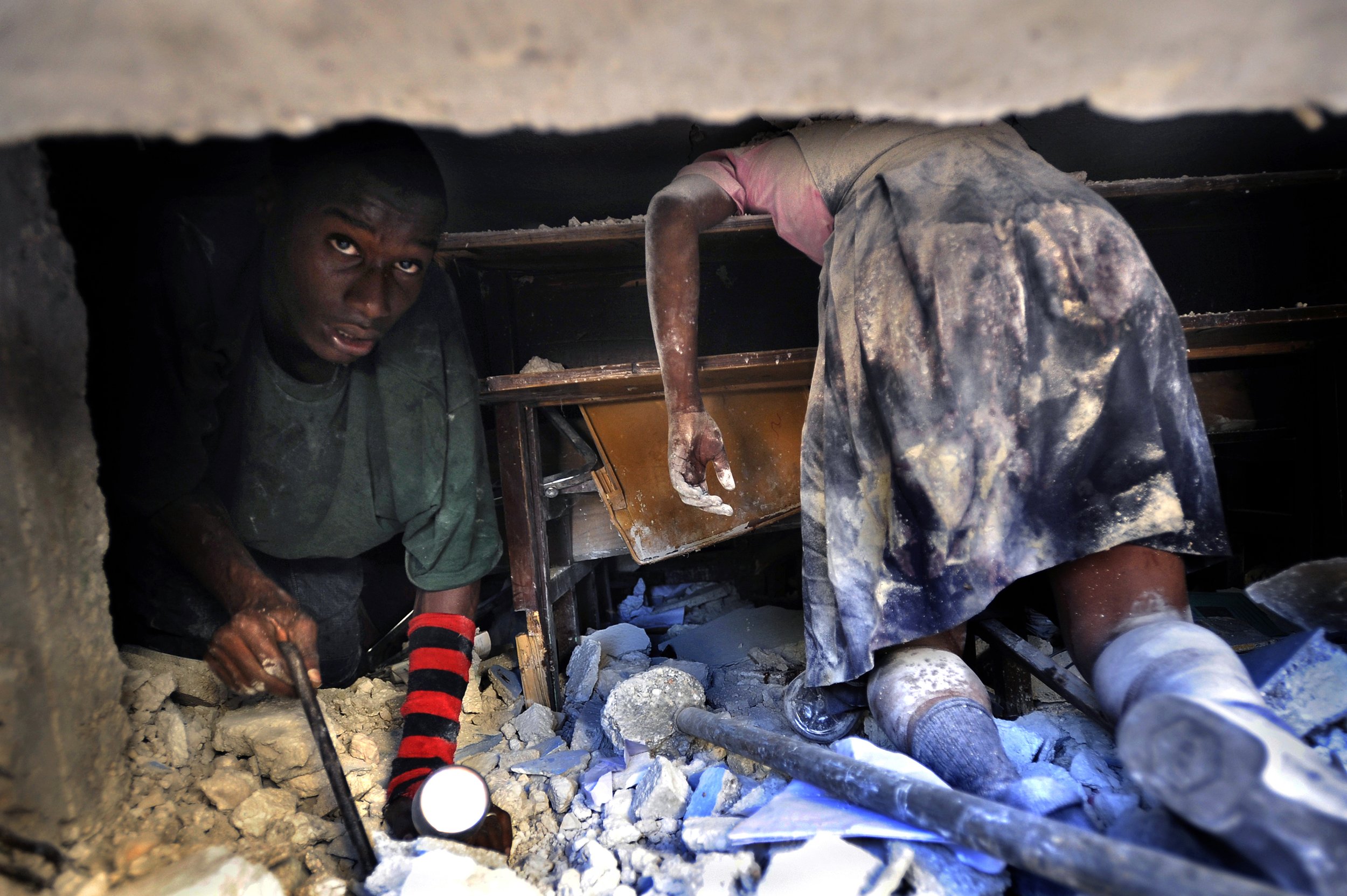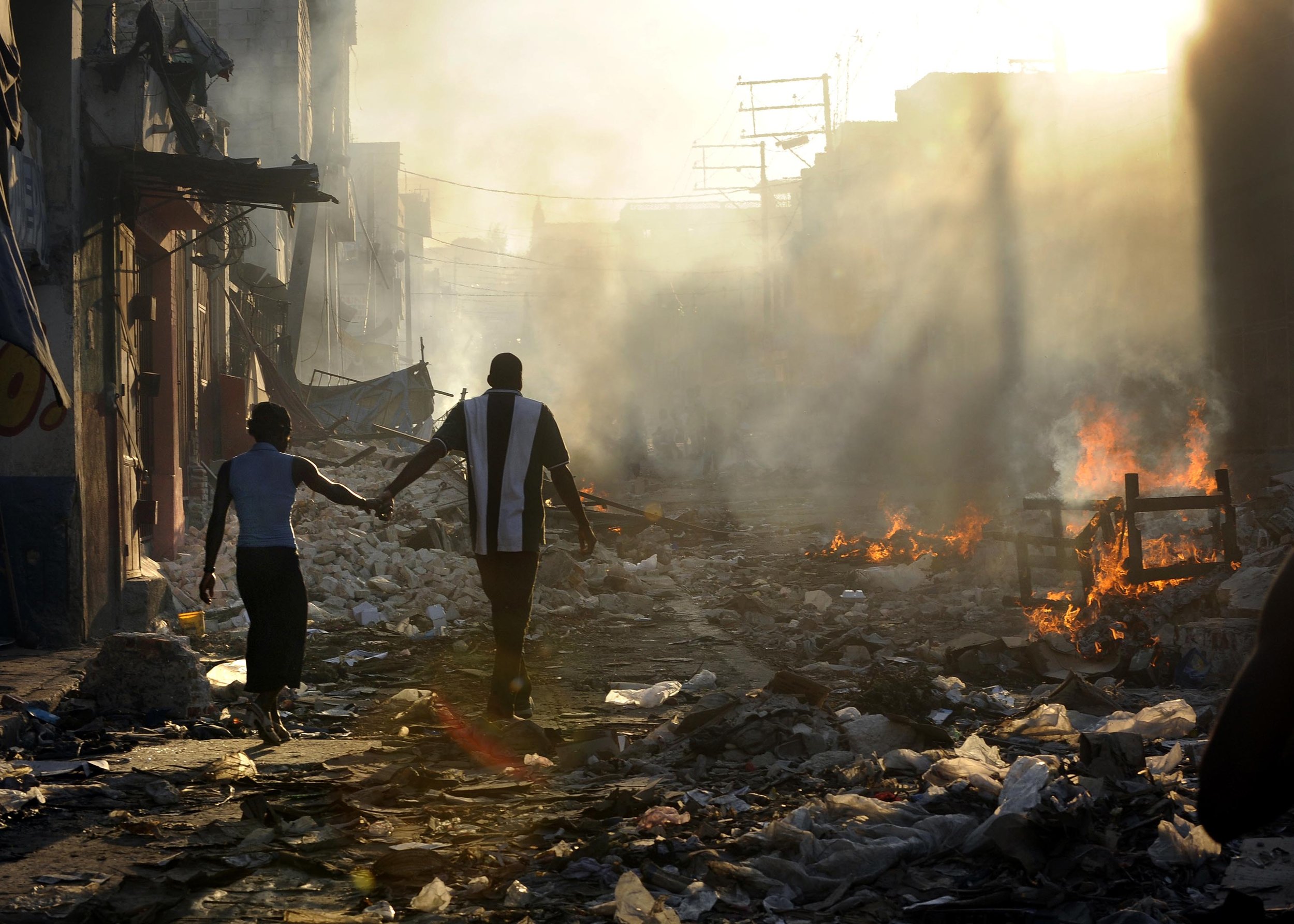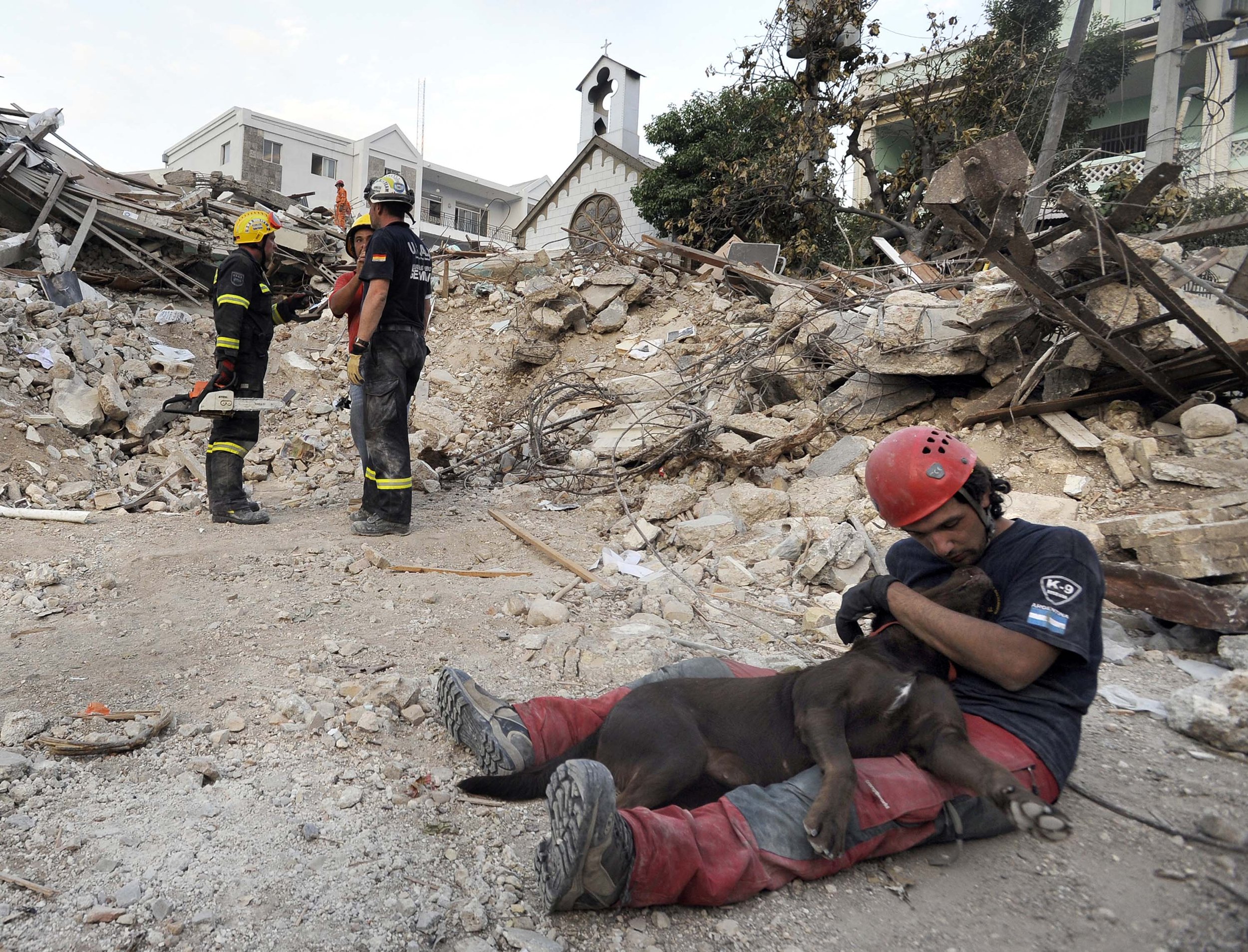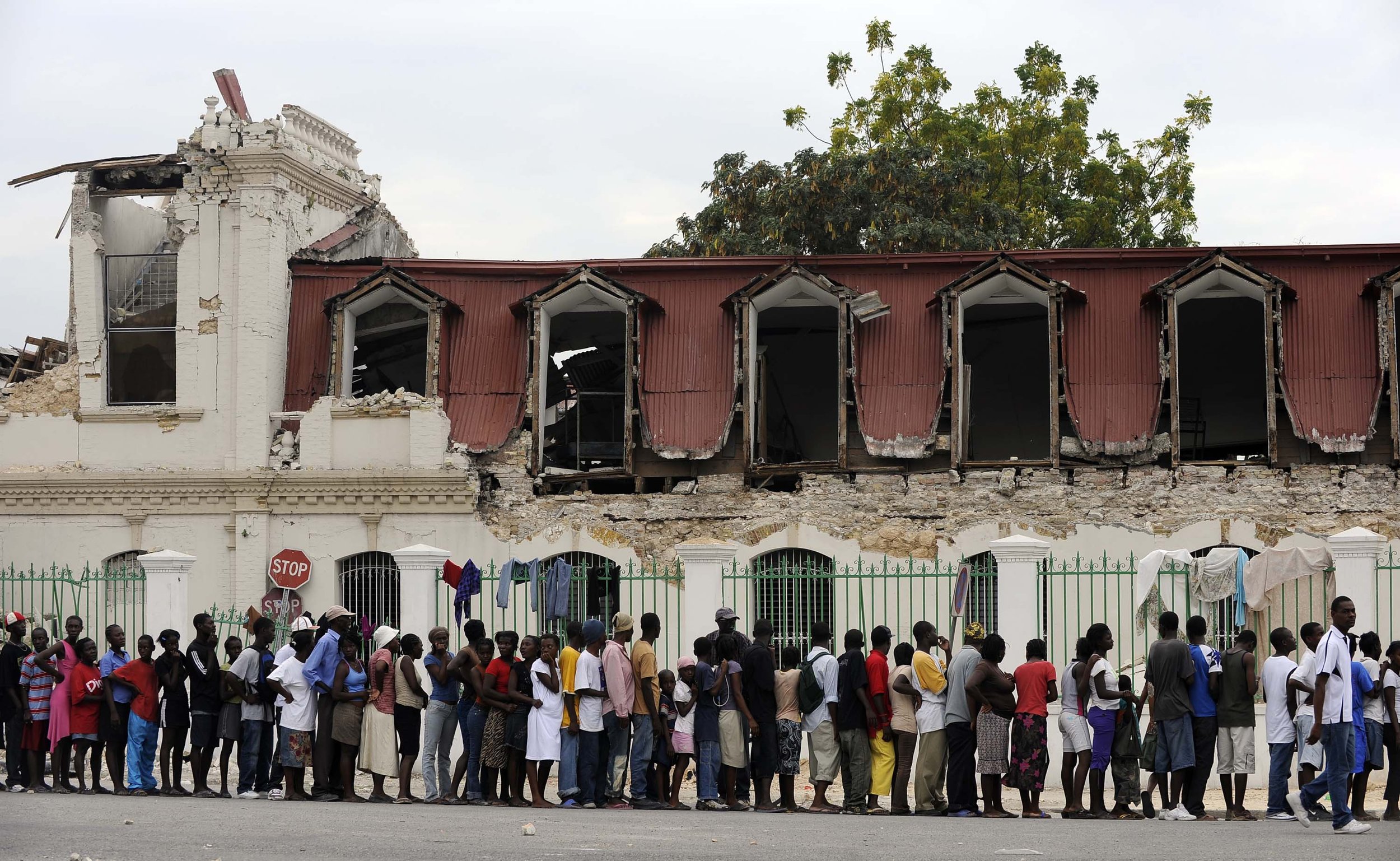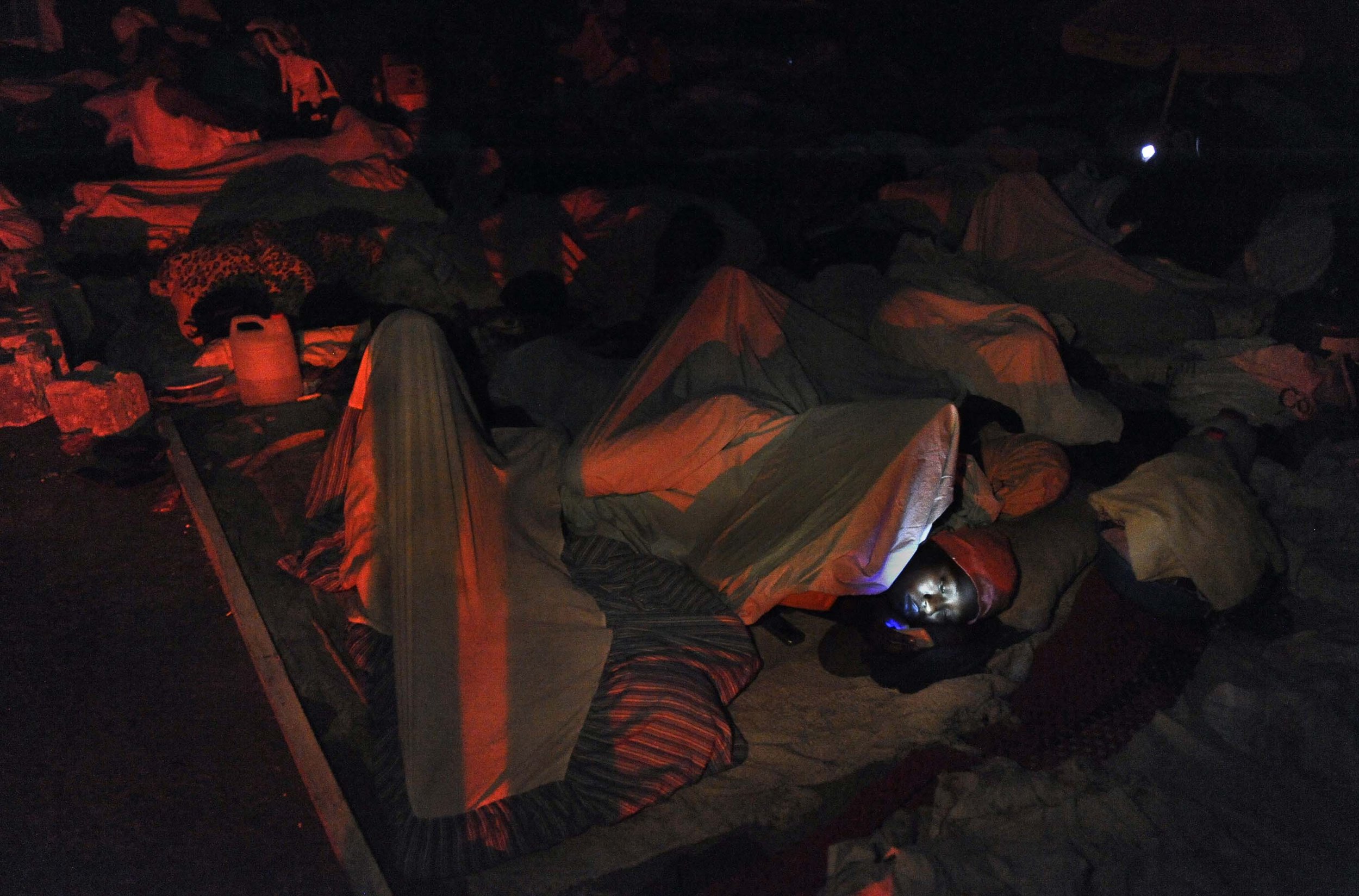Haiti’s Earthquake
2011 Pulitzer Prize Winner in Breaking News Photography
(shared with Nikki Kahn and Ricky Carioti)
A Haitian man tries to rescue a live teacher trapped amid the rubble of the devastating earthquake in Port-au-Prince as he crawls past a schoolgirl that perished at her desk when Ecole St. Gerard collapsed.
Hope
Haiti has had a troubled history, plagued by poverty and political turmoil. The devastation wrought by nature was yet another profound sorrow for the Haitian heart to endure. Over 300,000 people died in the tragedy and millions were displaced. As they mourned their dead, praying and singing hymns in the broken streets, a resilience of spirit emerged – holding onto the only thing many had left as they faced an uncertain future – hope.
For a few seconds the ground trembled during the catastrophic earthquake in Haiti and countless lives were shattered. Cindy Tersme threw herself amid the rubble of Ecole St. Gerard, screaming in anguish as she searched for her 14-year-old brother Jean Gaelle Dersmorne. Life stopped in that instant as the school collapsed, crushing students still sitting at their desks. She wept, "I can see my brothers feet but can't pull him out."
Frantic Haitian earthquake victims fight to get in the gate at a food distribution center in Cite Soleil, a slum plagued by poverty even before the tragedy destroyed a fragile infrastructure.
A woman's body with one pretty high heel lies in the street. People were going about their daily lives when the earth shook and forever altered Haiti's history. Bodies line the streets as survivors desperately tried to rescue live schoolchildren from the rubble at St. Gerard Technical School. The students were calling for help on their cell phones as they were trapped.
More than 300,000 people were killed in Haiti's catastrophic earthquake. Bodies pile up at the city morgue as trucks collect the dead from collapsed buildings and fractured streets to be buried in a mass grave, leaving loved ones without even a funeral to mourn their loss. Many bodies were burned in the tombs where they took their final breath.
The emotional toll and mental wounds of deep loss are etched on the faces of Haitians attending a worship service at Cathedral Notre Dame which was destroyed in the earthquake. Healing broken hearts may be the most poignant medical challenge facing aid workers.
The smell of death and ash permeated the air as decomposing bodies were pulled from the rubble. Haitians used heavy machinery to tear down buildings destroyed by the earthquake, finding many victims who had been trapped when floors of concrete collapsed.
Desperate Haitian survivors take goods from stores that were damaged during the earthquake in the market area of Port-au-Prince as chaos erupts on the streets.
The smell of charred flesh permeates the air as Haitian survivors burn bodies and brandish knives while taking goods from stores in the destroyed market place. Disorder erupted after the earthquake left Port-au-Prince in ruins.
A tiny baby named Reggie Claude was rescued after being trapped in the rubble of his home by International rescue groups Belgium, Madrid and Castilla Y Leon. Disaster relief workers and family rejoiced as Oscar Vega carried the child through the streets during a moment of hope in a vast ocean of despair.
Proyecto America, a Christian disaster relief team with international volunteers, provides food and medical assistance at a camp in Cite Soleil for ill and injured earthquake survivors. Nurse Marilibia Concepcion consoles 8-year-old Setline Premero.
A couple pick their way through the burning debris of a Port-au-Prince market, where earthquake survivors desperately searched for supplies.
Additional Images from Haiti’s 2010 Earthquake
To license these images contact The Washington Post newspaper.
